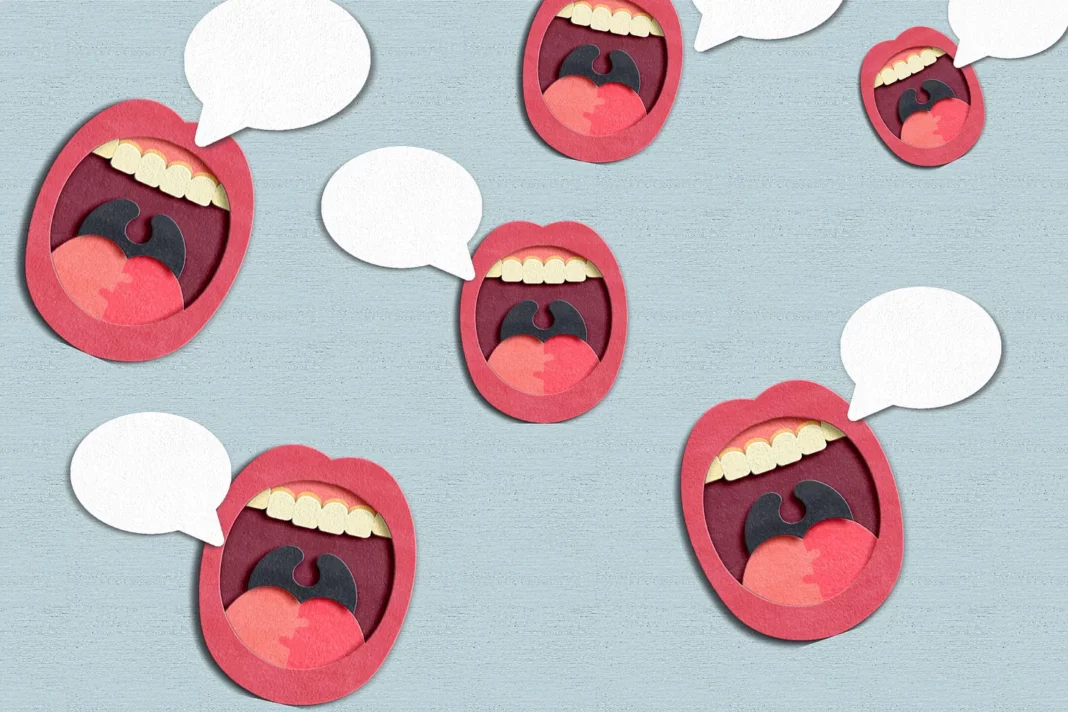Does the thought of making small talk fill you with dread? You’re not alone. Most people dislike idle chitchat because it feels fake and like a waste of time. We can all agree that talking about the weather is not interesting unless you are speaking to a meteorologist and a hurricane is on the way.
Contrary to conventional advice to “keep it light,” studies show that people prefer having deeper and more meaningful discussions. Moreover, engaging in substantive conversations is linked with greater happiness and well-being.
There are two main explanations for this—we are meaning-seeking animals and we are social animals. Conversing about our experiences and the world around us enables us to find meaning in our lives. Good conversations also facilitate bonding and a greater connection with the person with whom we are speaking. Simply put, making a point to talk about stuff that matters is a simple way to cultivate happiness.
That said, getting a conversation going is not always easy. On a date, at a dinner party, or even with a loved one, dialogue doesn’t always flow. We have all had awkward experiences when it felt like pulling teeth to get the other person to engage. Equally challenging is feeling “stuck” at a dinner party next to someone who is rambling on about something you have no interest in.
The good news is it doesn’t have to be this way. Consider re-framing the situation. Instead of dwelling on how dull your dinner partner is or how difficult they are to talk to, ask yourself, “What can I learn from them?” Channeling a more open mindset can transform a boring encounter into an interesting one. In a research paper entitled, “With Our Questions We Make the World,” the authors illustrate the power of an open mindset:
“Depending on whether I listen to you through the question ‘What is valuable about what she’s saying?’ or ‘Why is she wasting my time?’ I will hear very different messages.”
Remember, everyone you will ever meet knows something you don’t.
Here are 8 ways to make your conversations more meaningful:
1. Ask What and How Questions.
When you ask a “why” question, chances are you will get a simple answer, but when you ask a “what” question, you explore a person’s underlying motivation. For example, “What do you think happened?” yields a more thoughtful response than, “Why did that happen?” Every question you ask has the potential to narrow or expand the dialogue. “What” questions encourage reflection and convey a genuine interest in the other person’s experience.
2. Channel Curious George.
3. Ask for advice.
4. Avoid your favorite topic.
It’s counterintuitive but makes sense—whether it’s opera or your Shih Tzu—because you will probably end up talking too much and not listening enough. On that note….
5. Talk less and listen more.
Truly listening involves hearing what the person is saying and also paying attention to their non-verbal communication. Respond by paraphrasing and reflecting on the conversation to move it forward—it shows the other person you genuinely care about what they have to say. Try to hit on something the other person is passionate about and then use the following three magic words: “Tell me more.” Encourage elaboration and when the other person asks you a question, respond with more than just the bare bones. You don’t “just” live in New York, you live downtown because you love the West Village. In other words, give the other person some personal (and substantive) information to work with. By all means, resist the temptation to interrupt immediately and hijack the conversation: “Oh you like skiing? Me too! I just came back from a ski trip…”
6. Obey the 20-second rule.
Dr. Mark Goulston, author of Just Listen, provides some practical advice on when to talk and when to zip it. He recommends obeying the Traffic Light Rule:
“In the first 20 seconds of talking, your light is green: your listener is liking you, as long as your statement is relevant to the conversation and hopefully in service of the other person. But unless you are an extremely gifted raconteur, people who talk for more than roughly half-minute at a time are boring and often perceived as too chatty. So the light turns yellow for the next 20 seconds—now the risk is increasing that the other person is beginning to lose interest or think you’re long-winded. At the 40-second mark, your light is red. Yes, there’s an occasional time you want to run that red light and keep talking, but the vast majority of the time, you’d better stop or you’re in danger.”
7. Your body says it all.
Body language cues like eye contact (and not looking over their shoulder) and sincere nodding communicate interest. Smile, uncross your arms, pay attention. Nothing kills a pleasant conversation like feeling the other person doesn’t care about what you’re saying.
8. Lose the phone.
A 2014 study, called “The iPhone Effect,” demonstrated how the mere presence of a phone can ruin a conversation. The quality and substance of a conversation were rated as less fulfilling when compared to a conversation that took place in the absence of a mobile device. Leave it in your pocket or in your handbag and never place it on the table. If you are expecting an important email from your boss, let the other person know. Create a special notification. At least they will know you are not mindlessly thumbing through Instagram.
Talking about stuff that matters is good for you and good for the person you are chatting with. Try to have at least five substantive conversations a week—not only will they boost your spirits, they will open your mind.
Fran Lebowitz probably says it best: “Great people talk about ideas, average people talk about things, and small people talk about wine.”
I wish you all the best,
Dr. Samantha Boardman






